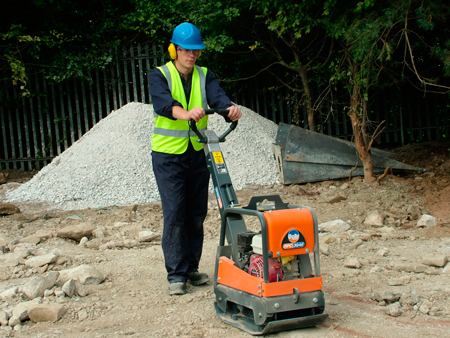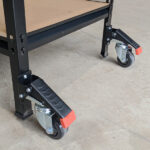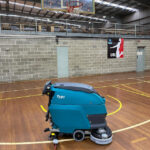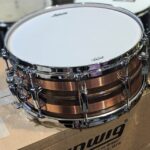
Vibrating plate compactors are heavy-duty machines that use a plate or a roller mechanism to compact concrete, asphalt or soil. They are an essential part of preparing construction job site for building any type of construction structure. In fact, the future structural integrity of a building or any other construction structure mainly depends on the resting on a sturdy ground produced by a vibrating plate compactor. Concrete, soil and asphalt have natural air or water spaces between the particles, which is the main reason a vibrating plate compactor is used – to create a dense and flat base. Engineers will never construct a building on a loose substratum, because the weight of the structure can slowly compact the material downward. As a consequence, the building structure could slowly weaken, causing costly structural damage and cracks.
The vibrating plate compactor is very similar to the jackhammer compactor in terms of shape with one big difference – a horizontal and flat plate placed at the machine’s bottom tip. As the operator walks slowly with the machine in hands, the plate moves quickly up and down on a small work area. The frequency and force of the vibration of the plate compacts the substrate downwards and the natural spaces are being filled with broken substrate pieces, creating a solid ground layer. For a more powerful compaction, there is a type of vibrating plate compactor with a heavier plate. Usually, concrete and asphalt require such vibrating plate compactor for best substrate manipulation, because their individual granules are more difficult to loosen and rearrange than typical soil. There are plate compactors with a water assembly which comply asphalt particles in order to prevent any build-up along the machine’s plate.
A roller vibrating plate compactor is usually in shape of a small tractor, but with two barrel shaped rollers positioned in the front and back wheel areas. It is designed for a large compaction job-site, for laying asphalt on highways, for example. The operator of this kind of a machine, sits on the top of the roller compactor and drives it forward. The vibration force come from the mechanical vibration assemblies which are built into the roller compactors, allowing the roller vibrating plate compactor to compact continuously along a substrate area. Each type of vibrating plate compactor is designed for a specific substrate application. Difficult substrates (concrete or asphalt) require a vibrating action applied with heavier and longer movements, while soil requires short and less powerful vibrations for best compaction results. However, both types of vibrating compactors can be dangerous if operated by inexperienced individual. Plate and roller vibrating plate compactor operators must be trained before operating such machine.






















